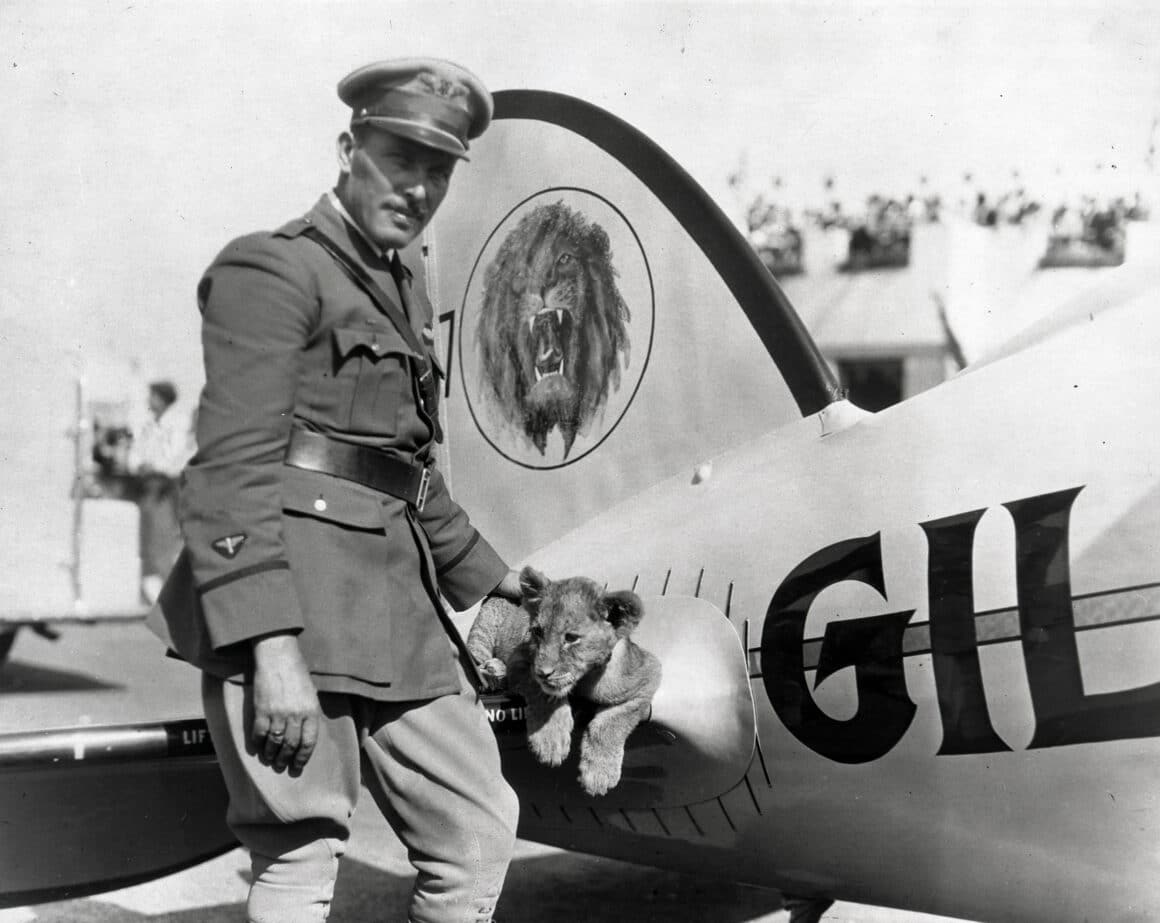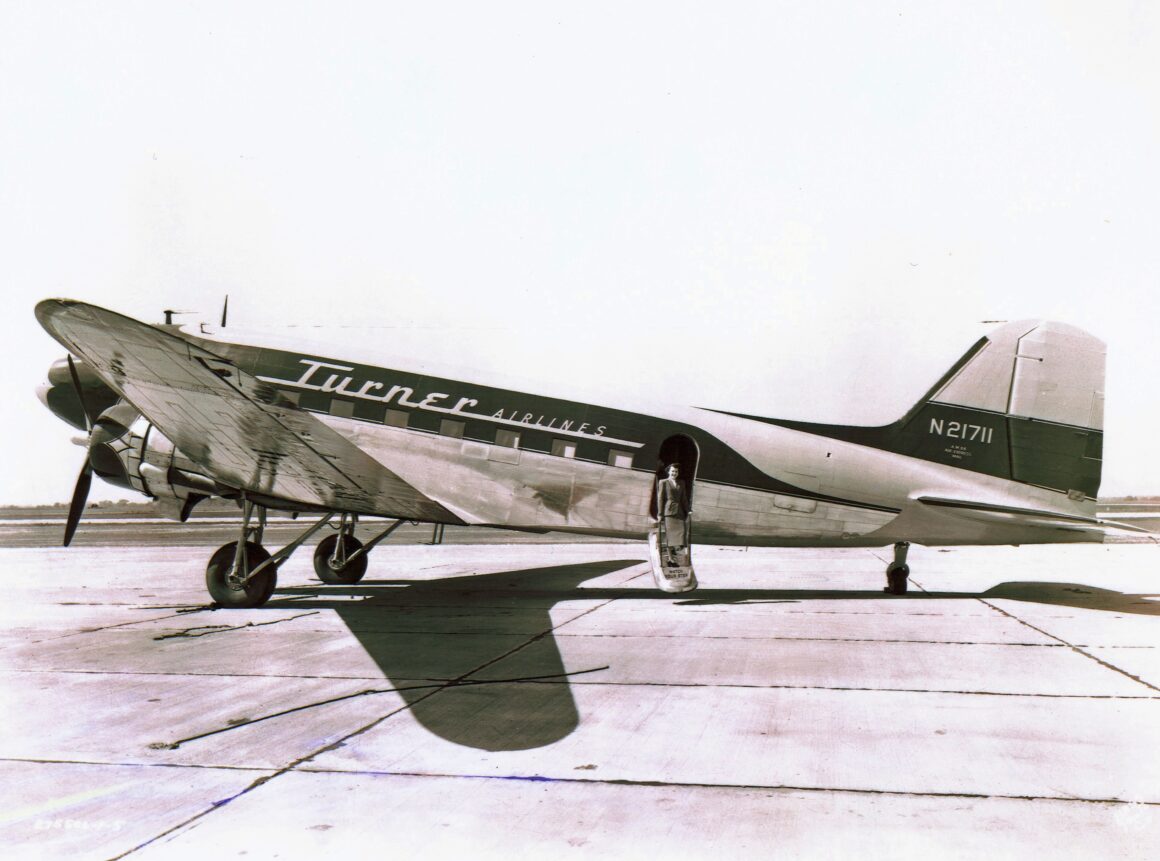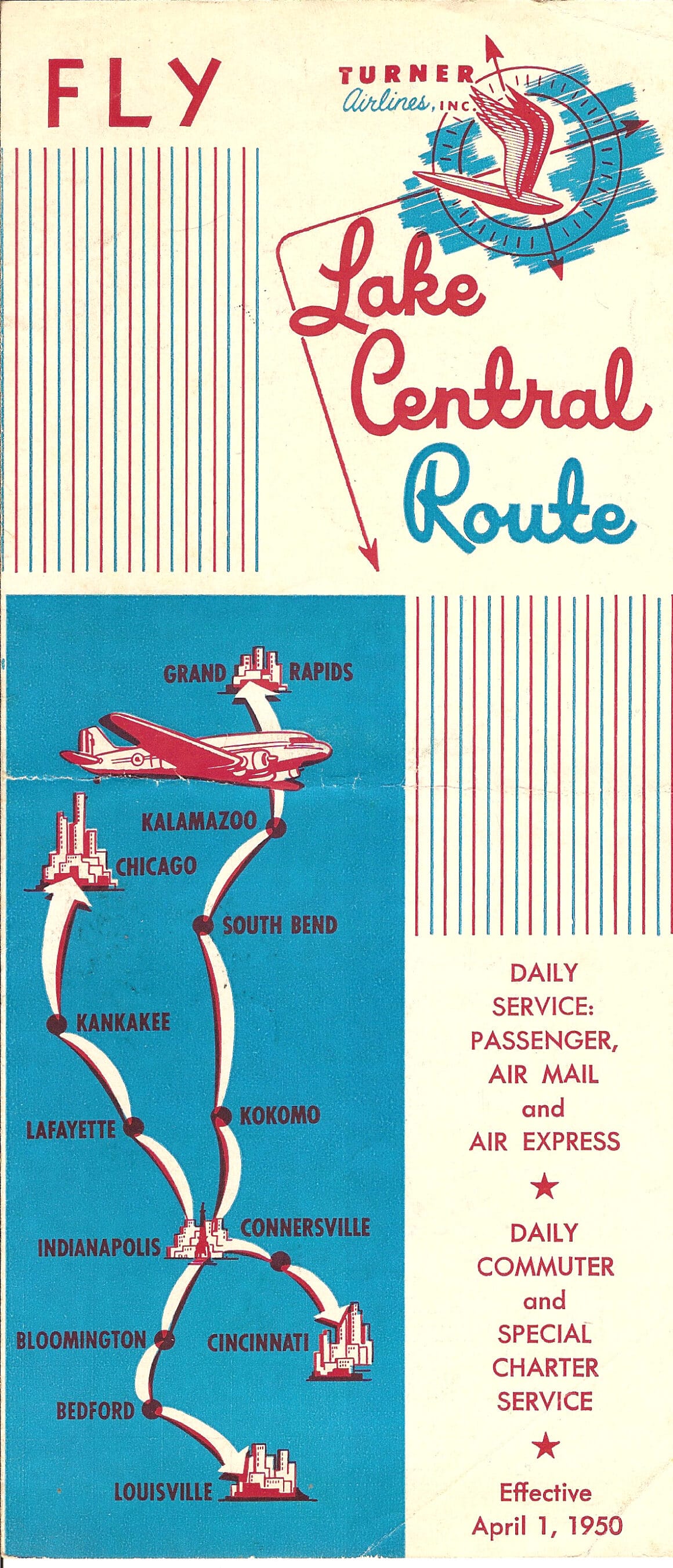Roscoe Turner was not just an aviator; he was a celebrity as famous as his contemporaries Amelia Earhart and Jimmy Doolittle. His expertise was air racing. He set speed records that won for him numerous trophies, and his photo graced the cover of Time Magazine after an outstanding performance in the 11,000-mile MacRobertson Air Race of 1934.
As well known for his flashy appearance and his glamorous lifestyle as he was for his air racing, Turner’s social circle included Hollywood movie stars and other celebrities of the day. He always traveled with Gilmore, his pet lion cub, named after The Gilmore Oil Company, for which he did publicity work.

Roscoe Turner retired from air racing in 1939 and founded a fixed base operation (FBO) in Indianapolis to sell and service aircraft, and to offer flying lessons. During World War II, his company was credited with producing 3,500 new fliers for the military.
AN AIRLINE IS BORN
With the war ending, Turner turned to a new venture. He applied to the Civil Aeronautics Board (CAB) – the government agency responsible for regulating America’s airline network – for a certificate to operate one of the new group of airlines to be called feeder, or local service, carriers. Specifically designed to connect small cities and towns of rural America with their big city neighbors, the feeder carriers came with the benefit of guaranteed income: subsidy provided by the government to cover losses incurred in serving small cities.
The CAB selected Roscoe Turner’s outfit over several other applicants to operate a local service airline from a hub in Indianapolis. His company was awarded two routes – one from Chicago to Louisville, and another from Grand Rapids, Michigan to Cincinnati – both serving several smaller cities enroute. The two lines intersected at Indianapolis.

Feeder airlines were uncharted territory. Aside from their guaranteed subsidies, no one knew if they would make money. Banks and investment firms were wary of risking funds on the experiment. Roscoe Turner was an aviator, not a finance person, and now he needed a lot of money to get his feeder airline into the air.
Turner eventually found his investors in brothers Paul and John Weesner. Paul was president of Nationwide Air Transport Service (NATS), a non-scheduled carrier operating within a gray area of government oversight, while John was president of Nationwide Airlines, an intra-state carrier that operated totally within the State of Michigan under the jurisdiction of state authorities.
Turner’s CAB-certificated company, with its guaranteed subsidy income, looked appealing to the Weesner brothers. They had money and airplanes; Turner had the certificate.
Turner Airlines got airborne on November 12, 1949, with the Weesners holding 75% of the stock. Before the company celebrated its one-year anniversary, Roscoe Turner lost interest in operating an airline. He sold his shares to the Weesners and the name of the company was changed to Lake Central Airlines (LCA).

The brother’s business practices came under scrutiny by the CAB. They were intermingling the assets, aircraft, and finances of their other companies with those of Lake Central and, even after the airline’s books were audited and corrected, LCA’s ledgers were found to be bleeding red ink. When it came time for the airline’s three-year review by the CAB, it was highly doubtful that Lake Central’s certificate would be renewed.
EMPLOYEES TO THE RESCUE
The CAB could have shut down Lake Central by not renewing the company’s certificate. The Weesner’s casual interlocking relationships, along with the airline’s poor financial performance, would have given the Board reason enough. But the cities being served by Lake Central deserved to keep their air service and the CAB also wanted to transfer several stations in Ohio then being served by TWA to one of the new feeder carriers.
Lake Central was granted a reprieve through December 1954. There was one condition: the Weesners had to go. Their stock was put into a trust and an entirely new Board of Directors was selected. Now, a buyer had to be found for Lake Central.
